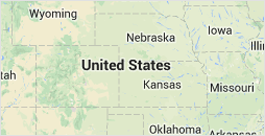Emily Clarke
PHONE NUMBER : -----
Map

What is Synthetic-Aperture Radar?
Scientists have many ways to capture data about the Earth's surface. For decades, geological experts have utilized various satellites and optical imaging systems to gain more insight and understanding. However, one new form of remote sensing is making waves in the scientific community.
Synthetic-Aperture Radar (SAR) is a form of active data collection. Unlike a static image, SAR captured detailed information about an area and its many distinct features. Through SAR image segmentation and AI, scientists can learn more about structures, materials, moisture and more.
How Does SAR Work?
SAR works differently than traditional optical imagery. The radar creates its own energy. Generally, the size of a sensor's antennae directly impacts the spatial resolution of the data it gathers. But this technology uses a synthetic aperture. Acquisitions from shorter antennas combine, creating a simulated large antenna that offers substantially higher resolution for the data.
When SAR captures data about a specific area of the Earth's surface, it records energy reflection. The energy that comes from SAR interacts with objects on the surface before reflecting toward the radar. That reflection provides detailed information standard optical imagery couldn't offer.
Frequency and wavelength play a vital role in SAR. Wavelength affects how the signal interacts with the Earth's surface and how much it can potentially penetrate an object. Meanwhile, signal frequency dictates the types of information SAR can gather. Scientists use specific wavelength and frequency combinations to serve different purposes. For example, high-frequency signals paired with smaller wavelengths are often utilized for airport security. However, low-frequency signals and broad wavelength tuning can detect biomass like vegetation.
Why SAR Matters
SAR is a game-changer that provides more detailed information about the Earth's surface than ever before. There are many potential applications. Geologists can use it to measure H2O absorption, monitor the geophysical features of an area, map changing vegetation areas and more. It also serves a role in security and maritime navigation.
It is more complex, but modern AI is improving SAR accessibility and adoption. SAR image segmentation and annotation help users search for areas of interest, target objects, filter data and more.
Author Resource:-
Emily Clarke writes about tech for automated annotation, AI labeling, data evaluation and more. You can find her thoughts at learning software blog.
